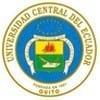An Online Pattern Recognition-Oriented Workshop to Promote Interest among Undergraduate Students in How Mathematical Principles Could Be Applied within Veterinary Science
Author details:
Knowing the importance of mathematics and its relationship with veterinary medicine plays an important role for students. To promote interest in this relationship, we developed the workshop “Math in Nature” that utilizes the surrounding environment for stimulating pattern-recognition and observational skills. It consisted of four sections: A talk by a professional researcher, a question-andanswer section, a mathematical pattern identification session, and a discussion of the ideas proposed by students. The effectiveness of the program to raise interest in mathematics was evaluated using a questionnaire applied before and after the workshop. Following the course, a higher number of students agreed with the fact that biological phenomena can be explained and predicted by applying mathematics, and that it is possible to identify mathematical patterns in living beings. However, the students’ perspectives regarding the importance of mathematics in their careers, as well as their interest in deepening their mathematical knowledge, did not change. Arguably, “Math in Nature” could have exerted a positive effect on the students’ interest in mathematics. We thus recommend the application of similar workshops to improve interests and skills in relevant subjects among undergraduate students.
Keywords: observational skills; interest in mathematics; veterinary medicine students; online workshop.
1. Introduction
2. Materials and Methods
2.1. Target Population
2.2. Evaluation Method
2.3. Program Overview
2.4. Statistical Analysis
3. Results
4. Discussion
5. Conclusions
1. Kogan, J.; Hatala, R.; Hauer, K.; Holmboe, E. Guidelines: The Do’s, Don’ts and Don’t Knows of Direct Observation of Clinical Skills in Medical Education. Perspect. Med. Educ. 2017, 65, 286–305. [CrossRef] [PubMed]
2. Rösch, T.; Schaper, E.; Tipold, A.; Fischer, M.R.; Dilly, M.; Ehlers, J.P. Clinical Skills of Veterinary Students—A Cross-Sectional Study of the Self-Concept and Exposure to Skills Training in Hannover, Germany. BMC Vet. Res. 2014, 10, 969. [CrossRef]
3. Kuchmenko, T.; Shuba, A.; Umarkhanov, R.; Lvova, L. The new approach to a pattern recognition of volatile compounds: The inflammation markers in nasal mucus swabs from calves using the gas sensor array. Chemosensors 2021, 9, 116. [CrossRef]
4. Ebrahimie, E.; Ebrahimi, F.; Ebrahimi, M.; Tomlinson, S.; Petrovski, K.R. Hierarchical pattern recognition in milking parameters predicts mastitis prevalence. Comput. Electron. Agric. 2018, 147, 6–11. [CrossRef]
5. Perez, A. Past, Present, and Future of Veterinary Epidemiology and Economics: One Health, Many Challenges, No Silver Bullets. Front. Vet. Sci. 2015, 2, 60. [CrossRef]
6. Gautam, R.; Kaur, P.; Sharma, M. A Comprehensive Review on Nature Inspired Computing Algorithms for the Diagnosis of Chronic Disorders in Human Beings. Prog. Artif. Intell. 2019, 8, 401–424. [CrossRef]
7. Wang, Y.; Liu, B.; Ma, Z.; Wong, K.C.; Li, X. Nature-Inspired Multiobjective Cancer Subtype Diagnosis. IEEE J. Transl. Eng. Health Med. 2019, 7, 4300112. [CrossRef]
8. Cengizler, Ç.; Ün, M.K.; Büyükkurt, S. A Nature-Inspired Search Space Reduction Technique for Spine Identification on Ultrasound Samples of Spina Bifida Cases. Sci. Rep. 2020, 10, 9280. [CrossRef]
9. FAO. One Health: Food and Agriculture Organization of the United Nations Strategic Action Plan; FAO: Rome, Italy, 2011.
10. Patterns in Nature. Why Study Patterns in Nature? Available online: http://www.patternsinnature.org/Book/WhyStudyPatterns. html (accessed on 17 November 2020).
11. Naderi, Y. Appropriate Mathematical Models to Describe the Lactation Curves of Milk Production Traits of Iranian Holstein Dairy Cattle. Acta Sci. Anim. Sci. 2018, 40, e37895. [CrossRef]
12. O’Neill, D.G.; James, H.; Brodbelt, D.C.; Church, D.B.; Pegram, C. Prevalence of Commonly Diagnosed Disorders in UK Dogs under Primary Veterinary Care: Results and Applications. BMC Vet. Res. 2021, 17, 69. [CrossRef]
13. Crosby-Durrani, H.; Blowey, R.; Manning, A.; Afonso, J.S.; Carter, S.; Evans, N.; Angell, J. An Observational Study Investigating Potential Risk Factors and Economic Impact for Bovine Ischaemic Teat Necrosis on Dairy Farms in Great Britain. Front. Vet. Sci. 2022, 9, 748259. [CrossRef] [PubMed]
14. Adam, J. Mathematics in Nature: Modeling Patterns in the Natural World; Princeton University Press: Princeton, NJ, USA, 2003.
15. Stakhov, A.; Rozin, B. The Golden Section, Fibonacci Series and New Hyperbolic Models of Nature. Available online: http://www.mi. sanu.ac.rs/vismath/stakhov/ (accessed on 12 November 2020).
16. Sacco, R.G. Fibonacci Harmonics: A New Mathematical Model of Synchronicity. Appl. Math. 2018, 9, 702–718. [CrossRef]
17. National Research Council. The Mathematical Sciences in 2025; National Academies Press: Washington, DC, USA, 2013.
18. Gabry´s, E.; Rybaczuk, M.; Ke¸dzia, A. Fractal Models of Circulatory System. Symmetrical and Asymmetrical Approach Comparison. Chaos Solit. Fractals 2005, 24, 707–715. [CrossRef]
19. Lennon, F.; Cianci, G.; Cipriani, N.; Hensing, T.; Zhang, H.; Chen, C.; Murgu, S.; Vokes, E.; Vannier, M.; Salgia, R. Lung Cancer—A Fractal Viewpoint. Nat. Rev. Clin. Oncol. 2015, 12, 664–675. [CrossRef] [PubMed]
20. Baish, J.; Jain, R. Fractals and Cancer. Cancer Res. 2000, 60, 3683–3688.
21. Dokukin, M.E.; Guz, N.V.; Woodworth, C.D.; Sokolov, I. Emergence of Fractal Geometry on the Surface of Human Cervical Epithelial Cells during Progression towards Cancer. New J. Phys. 2015, 17, 033019. [CrossRef]
22. Klein, K.; Maier, T.; Hirschfeld-Warneken, V.; Spatz, J. Marker-Free Phenotyping of Tumor Cells by Fractal Analysis of Reflection Interference Contrast Microscopy Images. Nano Lett. 2013, 13, 5474–5479. [CrossRef]
23. University of Nottingham Physical and Mathematical Veterinary Medicine—The University of Nottingham. Available online: https://www.nottingham.ac.uk/research/groups/physical-mathematical-veterinary-medicine/index.aspx (accessed on 17 November 2020).
24. Yang, A.; Fernando, S.; Tighe, J.; O-Halloran, M.; Morphet, J.; Kumar, A. Introduction of an in-terprofessional gynaecology surgical skills workshop for undergraduate medical and nursing students. Aust. N. Z. J. Obstet. Gynaecol. 2020, 60, 238–243. [CrossRef]
25. Kompella, P.; Gracia, B.; LeBlanc, L.; Engelman, S.; Kulkarni, C.; Desai, N.; June, V.; March, S.; Pattengale, S.; Rodriguez-Rivera, G.; et al. Interactive youth science workshops benefit student participants and graduate student mentors. PLoS Biol. 2020, 18, e3000668. [CrossRef]
26. Çakır, N.A.; Gass, A.; Foster, A.; Lee, F.J. Development of a game-design workshop to promote young girls’ interest towards computing through identity exploration. Comput. Educ. J. 2017, 108, 115–130. [CrossRef]
27. R Core Team R: A Language and Environment for Statistical Computing. Available online: https://www.r-project.org/ (accessed on 25 March 2022).
28. Asia Society Understanding the World Through Math. Available online: https://asiasociety.org/education/understandingworld-through-math (accessed on 7 November 2020).
29. Bouvier, S. Increasing Student Interest in Science, Technology, Engineering, and Math (STEM): Massachusetts STEM Pipeline Fund Programs Using Promising Practices; University of Massachusetts Donahue Institute Research and Evaluation Group: Hadley, MA, USA, 2011.
30. Issuu Building Teacher’s Notebook: STEM-Learning through Science-Based Nature Journaling. Available online: https://issuu. com/nurturenaturecenter/docs/building_teacher_s_notebook (accessed on 9 December 2020).
31. Yildiz, C.; Çabakçor, B.Ö.; Özdogan, Z.B.; Arslan, S. The Views of the Teacher and Students in Regards to the Use of the History of Mathematics in the Teaching of Fractal Subject. Procedia Soc. Behav. Sci. 2011, 15, 868–872. [CrossRef]
32. Conner, B. Drug Calculations in Veterinary Medical Education—Where Are We? J. Vet. Med. Educ. 2020, 48, 252–255. [CrossRef] [PubMed]
33. Neill, C.; Hansen, C.; Salois, M. The Economic Cost of Burnout in Veterinary Medicine. Front. Vet. Sci. 2022, 9, 814104. [CrossRef] [PubMed]
34. Harackiewicz, J.M.; Smith, J.L.; Priniski, S.J. Interest Matters: The Importance of Promoting Interest in Education. Policy Insights Behav. Brain Sci. 2016, 3, 220–227. [CrossRef]
35. Rotgans, J.I.; Schmidt, H.G. The Relation between Individual Interest and Knowledge Acquisition. Br. Educ. Res. J. 2017, 43, 350–371. [CrossRef]
36. Rotgans, J.I.; Schmidt, H.G. Situational Interest and Learning: Thirst for Knowledge. Learn. Instr. 2014, 32, 37–50. [CrossRef]
37. Peralta, P.; Sagara, E.; Klich, G.; Buglione, M.; Yaful, G.; Torres, P. Abordeaje Interdisciplinar en la Carrera Medicina Veterinaria de la Universidad Nacional de Río Negro; Universidad Nacional de Río Negro: La Plata, Argentina, 2015.
38. Wrocław University of Environmental and Life Science Interdisciplinarity in Veterinary Science—A Recipe for Success. Available online: https://upwr.edu.pl/en/news/interdisciplinarity-in-veterinary-science-a-recipe-for-success-324.html (accessed on 25 March 2022).
39. Swarat, S.; Ortony, A.; Revelle, W. Activity Matters: Understanding Student Interest in School Science. J. Res. Sci. Teach. 2012, 49, 515–537. [CrossRef]
40. Heitzman-Breen, N.; Golden, J.; Vazquez, A.; Kuchinsky, S.; Duggal, N.; Ciupe, S. Modeling the Dynamics of Usutu Virus Infection in Birds. J. Theor. Biol. 2021, 531, 110896. [CrossRef]
41. Layan, M.; Dellicour, S.; Baele, G.; Cauchemez, S.; Bourhy, H. Mathematical Modelling and Phylodynamics for the Study of Dog Rabies Dynamics and Control: A Scoping Review. PLoS Negl. Trop. Dis. 2021, 15, e0009449. [CrossRef]
42. Sun, T.; Liu, Y.; Qin, X.; Aspridou, Z.; Zheng, J.; Wang, X.; Li, Z.; Dong, Q. The Prevalence and Epidemiology of Salmonella in Retail Raw Poultry Meat in China: A Systematic Review and Meta-Analysis. Foods 2021, 10, 2757. [CrossRef]
43. Weber, S.H.; dos Santos, S.K.; Heinzen, B.C.; Viana, N.P.; Sotomaior, C.S. Comparison of Nonlinear Mathematical Models for Lamb Growth Analysis. Trop. Anim. Health Prod. 2021, 53, 151. [CrossRef] [PubMed]
44. Aubreville, M.; Bertram, C.A.; Marzahl, C.; Gurtner, C.; Dettwiler, M.; Schmidt, A.; Bartenschlager, F.; Merz, S.; Fragoso, M.; Kershaw, O.; et al. Deep Learning Algorithms Out-Perform Veterinary Pathologists in Detecting the Mitotically Most Active Tumor Region. Sci. Rep. 2020, 10, 16447. [CrossRef] [PubMed]
45. Ortega-Paredes, D.; Larrea-Álvarez, C.; Herrera, M.; Fernandez-Moreira, E.; Larrea-Álvarez, M. Assessing Knowledge of Genetics in Undergraduate Students in Quito, Ecuador. F1000Research 2019, 8, 290. [CrossRef] [PubMed]
46. Ortega-Paredes, D.; Larrea-Álvarez, C.M.; Torres-Elizalde, L.; de Janon, S.; Vinueza-Burgos, C.; Hidalgo-Arellano, L.; Šefcová, M.A.; Molina-Cuasapaz, G.; Fernandez-Moreira, E.; Larrea-Álvarez, M. Antibiotic Resistance Awareness among Undergraduate Students in Quito, Ecuador. Antibiotics 2022, 11, 197. [CrossRef]
47. Ortega-Paredes, D.; Larrea-Álvarez, C.M.; Jijón, S.I.; Loaiza, K.; Šefcová, M.A.; Molina-Cuasapaz, G.; Barba, P.; Vinueza-Burgos, C.; Fernandez-Moreira, E.; Ramírez, H.; et al. A Cross-Sectional Study to Assess Knowledge of COVID-19 among Undergraduate Students in North-Central Ecuador. Int. J. Environ. Res. Public Health 2021, 18, 8706. [CrossRef]
48. Ortega-Paredes, D.; Zurita, J.; Zurita, C.; Leoro-Garzón, P.; Leoro-Monroy, G.; Larrea-Álvarez, C.M.; Loaiza, K.; FernandezMoreira, E.; Molina-Cuasapaz, G.; Larrea-Álvarez, M. An On-Line Cross-Sectional Questionnaire to Assess Knowledge of COVID-19 Pandemic among Citizens Tested for the SARS-CoV-2 Virus in Quito and Ibarra, Ecuador. Int. J. Environ. Res. Public Health 2021, 18, 1691. [CrossRef]














